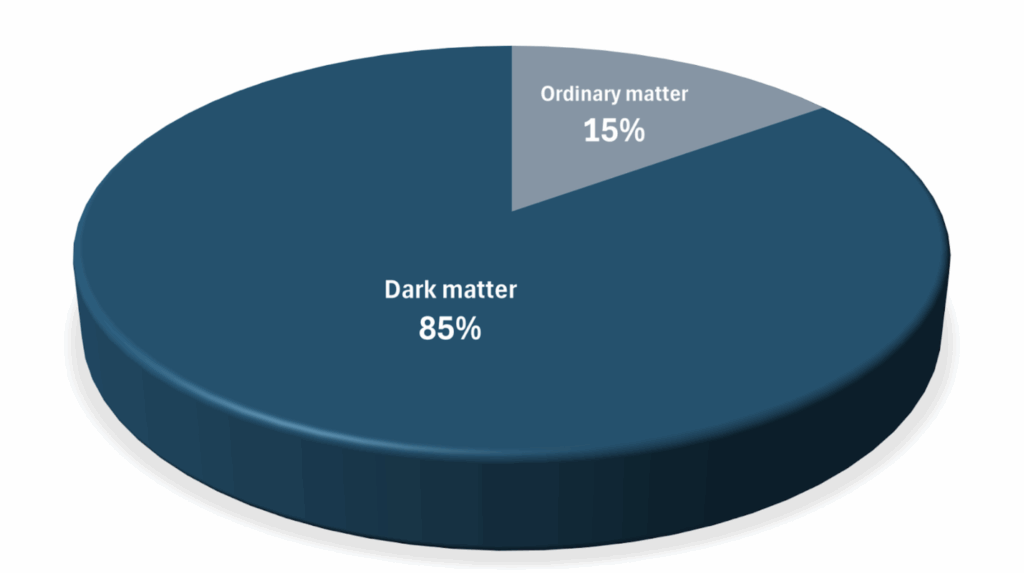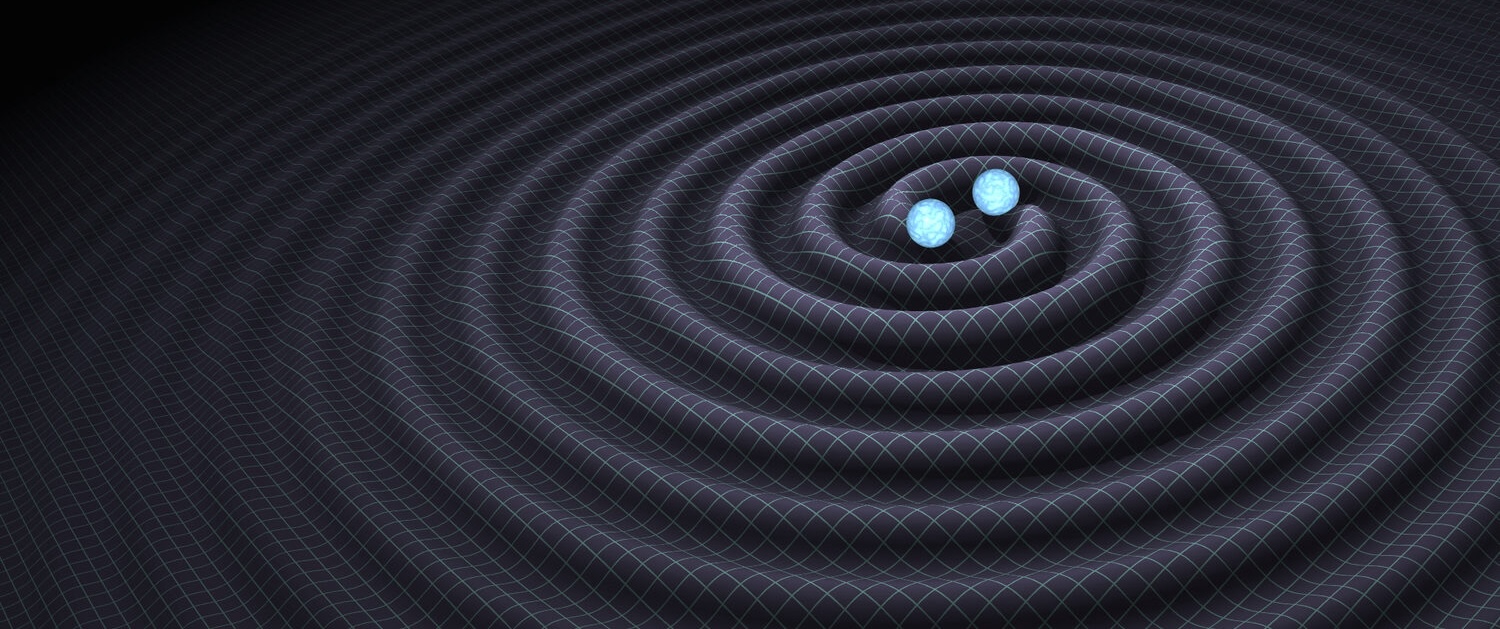Data from O4a yield no evidence of dilatons, dark photons or tensor dark matter; but upper limits surpass those from existing experiments by orders of magnitude.
Dark matter makes up 85% of the total matter in the Universe, but it is completely invisible to us. And yet, we can measure its effects on a variety of celestial objects: it roams around each galaxy and prevents stars from flying out of their orbits; it changes the directions of light rays from far-away galaxies; it guides the formation of the large-scale structures of the Universe, and it has even left imprints in the cosmic microwave background, the farthest and oldest photograph of the Universe, taken when it was only 380,000 years old.

Figure 1: Pie chart showing that dark matter is the dominant constituent of the universe. While “ordinary” matter (including the atoms that make up all planets, stars and galaxies) comprises only about 15% of the matter in the universe, dark matter (which may include the three types of ultralight particle searched for in this work) comprises about 85%.
The LIGO, Virgo, and KAGRA gravitational-wave detectors were designed to search for gravitational waves from merging black holes and neutron stars, asymmetrically rotating pulsars, exploding stars, and combinations of all of these sources. But, these detectors are so sensitive that they could also observe dark matter that interacts directly with them.
Here, we search for three specific types of dark matter: (1) dilatons, (2) dark photons and (3) tensor bosons, that could have a mass that is twenty orders of magnitude smaller than the electron mass. On earth, if these particles exist they would be moving with a speed of around 300 km/s, and there would also be huge numbers of them: of order 1026 particles per cubic meter. Dilatons would interact with photons and electrons and cause periodic variations of the fundamental physical constants of the universe, which in turn would cause oscillations of the beam splitter and mirrors of the detector. Dark photons would interact with protons and neutrons, or just neutrons, in the detector’s mirrors. Finally, tensor bosons would act like a gravitational wave and stretch and squeeze the spacetime around the mirrors. In all three cases, the effect of the interaction is that a time-dependent, oscillatory motion of the interferometer components would be expected.
To a good approximation, the signal from these interactions will be at a single frequency because the mass of each dark matter particle is fixed. Dark matter is also always flowing through the detectors, which means that dark matter is constantly interacting with the particles in the mirrors or beamsplitter. Therefore, the signal is continuous, always “on”, and at an almost fixed tone. In practice, the signal’s frequency shifts by a very small amount randomly over time because each dark matter particle is travelling at a different speed when it interacts with the detector.
Our work uses data from the fourth observing run of Advanced LIGO, Advanced Virgo and KAGRA to determine if and with what strength dark matter could couple to the interferometers. Although we have not detected a signal, we can place upper limits on this coupling strength as a function of the possible mass of the dark matter particle in all three cases: dilatons, dark photons and tensor bosons.

Figure 2 (Figure 1 in the paper): Upper limits on the strength of the coupling of dark matter to the interferometers for the three kinds of dark matter we consider (dilatons, dark photons and tensor bosons), as a function of dark-matter mass (in electron volts, eV) and signal frequency. Coupling strengths above the red, black, and blue lines have been ruled out by this study: the lower the limit, the more constraining our searches are. We have used three methods (called “cross correlation”, “BSD excess power”, and “LPSD”) to search for dark matter interactions with gravitational-wave interferometers, which have provided consistent results. The upper limits on dilatons exceed those from the previous observing run, O3, by about an order of magnitude, while the limits on dark photons are a factor of 10-100 better than those from other dark matter experiments (MICROSCOPE and Eöt-Wash) at many frequencies. Additionally, the limits on tensor bosons exceed the limits from a fifth-force experiment by five orders of magnitude.
Our constraints on dilatons surpass those from the third observing run of advanced LIGO, Virgo and KAGRA by an order of magnitude, while the constraints on dark photons are about 10 times better than those obtained with Eot-Wash and MICROSCOPE, two experiments that were designed to search specifically for these particles. Moreover, we set the very first limits on how tensor bosons interact with interferometers, improving on earlier experiments by about a factor of 105. Our measurements of the coupling of dark matter to LIGO, Virgo and KAGRA give us insight into how dark matter influences the present Universe and how it could have formed.
Find out more:
Back to the overview of science summaries.

